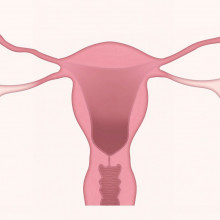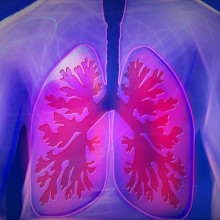Vaping Health Impacts: No Smoke Without Fire?
This week vaping, and the potential hidden health costs, go under the microscope as we also explore whether teens that would never smoke are being seduced by eCigarettes. Also, news of period impacts of the Covid-19 vaccines, woodpeckers and brain damage, signs that CRISPR could destabilise chromosomes, and a "wheely" good way to recycle old tyres...
In this episode

00:52 - Did Covid-19 Vaccines Affect Women's Periods?
Did Covid-19 Vaccines Affect Women's Periods?
Katharine Lee, Tulane University & Kathryn Clancy, University of Illinois
Across the globe, over 12 billion doses of coronavirus vaccines have been administered. And while potential side-effects of a sore arm, fever and fatigue were widely publicised, one impact not originally on the list started to crop up repeatedly: women reported short-term changes to their periods. But were these women who would have experienced this by chance anyway and it coincided with them getting the vaccine, or was there really a link? To find out, researchers have been poring over thousands of survey responses to better understand how vaccines might impact on periods. Julia Ravey spoke to Kathryn Clancy and Katharine Lee, who were behind the study…
Katharine - I am Katharine Lee.
Kathryn - ...and I'm Kathryn Clancy.
Julia - When did these reports start to come out about changes to people's menstruation? When did you start to notice them?
Katharine - I started to notice it after I got vaccinated in January of 2021. As someone who already researched periods, I was attuned to the fact that periods respond to tons of things, including an immune response, like the vaccine kicks off in your body. And so I personally experienced this and reached out to Kate to just ask if she'd heard anything similar from anyone else.
Kathryn - It's frankly because Katie noticed it to begin with that, when I finally got my vaccine a few weeks later and then my period another week and a half after that, I was having the heaviest period of my life. I asked Twitter, because of course that's what one does, if anyone else has had the same experience and the response was overwhelming.
Julia - Why was it hard initially to say the vaccine itself was having these impacts and what were some of the initial responses from doctors in the medical community to these claims?
Kathryn - The tweet went viral and our survey was very popular. So a lot of journalists wrote stories about the work that we were trying to do to capture these experiences. And almost every single article, with only a few exceptions, had a quote by an MD that either said there's no biological mechanism to explain this or these are ladies just experiencing pandemic stress and stress affects the menstrual cycle, too. Doctors and medical workers are going through a lot right now and I know they just wanna see people vaccinated - we all do. But the step to getting people comfortable with medical treatments, especially ones that have emergency authorisations, is to listen to them, right? And to make sure they feel heard and to have done the due diligence during the trials to make sure that we're understanding how different bodies react to the vaccine. These trials didn't ask any questions about menstruation at all.
Julia - Yeah, and if it wasn't reported on in the trials, I'm guessing that with your mission to try and understand a bit more about if there was a link between the vaccine and changes to menstrual cycles, you were starting with a bit of a blank slate then in terms of you have all these individual stories. But how did you go about collate them together to understand if there was a real link there?
Katharine - We designed our survey to ask about people's experiences with the period after their vaccine, in relation to their period that they would normally expect, or their lack of period for those who normally don't menstruate. And then we asked them, after dose one and after dose two, we just asked about those two periods, after each of those vaccines. It was the texture and content of their periods that was worrying for a lot of people. So it was heavier, or it was unexpected. We heard from a lot of folks who are trans or non-binary who suppressed their menstrual cycles in order to confirm their gender. And we did hear from a number of folks who experienced breakthrough bleeding, who had gender dysphoria as a result. So I think being aware that this is a possibility is important, especially for those groups, because making sure they have supplies on hand, making sure they are mentally and emotionally prepared as best as they can in case it happens is really important.
Julia - And did you find any particular relationship? So say for individuals who have certain conditions, were they more likely to experience these changes following having the vaccine into their periods?
Katharine - So there are a couple of things. We noticed that again, if anyone in the vaccine trials knew anything about the uterus, they might have kind of noticed and predicted this. But there were a couple of major trends that we saw. So among menstruating people, we saw that if they were a little older, if they had been pregnant before or had children, or if they had reproductive conditions that are hyper proliferative, so those are things like endometriosis or fibroids. People with those types of reproductive backgrounds were more likely to say that they had a heavier period. Among the postmenopausal folks, they were more likely to be younger as you might expect, because that probably means that their uterus is a little less quiescent or less old. So that uterus is maybe a little more likely to respond to the treatment. The uterus being the immune organ that it is, and the way that immune function is actually very tied up in blood, because blood is gonna be carrying all sorts of important things we need. It's got repair processes, it's got healing processes, it's got bleeding and clotting that it does. And that's all a natural thing that the uterus does regularly. And so you can imagine if you activate the immune system in some way, then that whole bleeding and clotting and inflaming and healing system is going to potentially be impacted by that.

06:22 - Why Woodpeckers don't get Brain Damage
Why Woodpeckers don't get Brain Damage
Sam Van Wassenbergh, University of Antwerp
We often talk, metaphorically, about banging our heads against the wall. Luckily, for most of us, talking about it is as far as it goes. But for some animals, really banging your head against something hard, many times a day, is a fact of life. So why don’t woodpeckers - that are masters at this and do it to attract mates and also open up holes in trees to find insects to eat - get headaches and brain damage? The popular theory, for decades, was that these birds have spongy tissue at the base of the beak that soaks up the shockwave of the beak striking the tree, and this avoids transmitting the force to the brain. Surprisingly, it was such an attractive theory that everyone embraced it but no one actually thought to test it. And, speaking with Chris Smith, that’s where Sam Van Wassenbergh comes in…
Sam - Scientists have hypothesised that woodpeckers have a built-in shock absorber in their head to prevent themselves from getting headaches or injuries in their brain. But this hypothesis has never been tested so far, so that's what we wanted to do.
Chris - What sorts of forces, when a woodpecker is striking a tree, will its tissues, including its brain, encounter then?
Sam - When the beak impacts the tree, you have a strong shock. So the brain will suddenly come to a stop and the tissues will be pushed against each other. Where at the back of the head, they will also be pulled away from the brain case. If the shock is too high, you will get a concussion.
Chris - We see this in human athletes, don't we, and people in the sports field when, they have a sudden deceleration injury of their head. So it seems logical to assume that an animal that is repeatedly banging its head against a tree probably is gonna encounter some of the same problems.
Sam - Absolutely. Yes. If you watch woodpeckers smashing their head against trees, it's a very logical idea to think that they have a benefit from having something that cushions this blow. It's definitely a problem for football players or boxers or any kind of people that experience these strong shocks to their head.
Chris - So how did you address this then?
Sam - Well, we went out to zoos where they have woodpeckers and there are not too many in Europe. We took our high speed cameras so we could film up to 4,000 frames per second. And then we played these videos back frame by frame and tracked different points on the head of the woodpeckers, like we would do with crash test dummies. So comparing these different parts on the head and how they experience the shock.
Chris - How did you get them to hammer on demand? Because other people who've studied woodpeckers, because there was a paper a few years ago, where researchers used an old fashioned typewriter and tapped out a few words and the wood pickers would respond by tapping themselves. Did you just wait for them to tap or did you stimulate the tapping in some way?
Sam - No, we just waited for them to tap and this was not such a big problem. These birds really like to hit their head against the wood.
Chris - So you get these pictures, you analyze frame by frame. What are you comparing with what? So you're just seeing the beak hit the tree and then what do you measure?
Sam - So if there would be any cushioning going on between the beak and the brain case, we would see a difference in the movement profiles of the beak and the brain case. So we compared the deceleration values we got out of our data set. And well the result was that there was no difference between the beak and the brain case. So there was no evidence that there's any shock absorption going on. So it's clear that these woodpeckers are not going for this option to absorb the shock.
Chris - You're saying if they did have some kind of spongy tissue that was there to soak up, like a shock absorber, some of that impact so it wasn't transmitted to the brain, which is what other people have speculated. That you would see the beak changing its position relative to these other structures in your pictures. And you just don't see that. So you're ruling that out.
Sam - Yeah, exactly. There's hardly any movement between the beak and the brain case.
Chris - What do we infer is happening to the brain then under those circumstances?
Sam - Well, the brain certainly experiences shock at this moment, but we calculated that it is not strong enough for birds to get a concussion. Birds are just a lot smaller than humans and they just can withstand higher shocks. It's a law in biomechanics that smaller animals can withstand higher shocks. The birds still have some safety margin before they would get any damage to their brain.
Chris - Has anyone gone inside the head of animals like woodpeckers after they've been pecking to see if there are evidences of brain changes and whether this is just an unfortunate cost of this behavioural aspect? Has anyone done that?
Sam - There has been one study, they found some proteins that are involved in damage repair. They call these the Tau proteins and we also see them in humans after they get concussions and things like that. So there is some evidence that there's damage going on. It Is an issue for these woodpeckers to try to minimize their damage.

12:15 - CRISPR Destabilises Chromosomes
CRISPR Destabilises Chromosomes
Adi Barzel, University of Tel Aviv
At the forefront of genetic engineering is CRISPR, a method of gene editing with the potential to revolutionise the treatment of genetic disorders and speed up the process of genetic engineering. On this basis, it won the 2020 Nobel Prize in Chemistry. But, as he explains to Will Tingle, University of Tel Aviv gene therapist Adi Barzel, has found that using the system can sometimes destabilise chromosomes and introduce new genetic problems...

17:51 - Jet fuel alternative produced by bacteria
Jet fuel alternative produced by bacteria
Pablo Cruz-Morales, DTU-Biosustain
Fuel prices may be astronomically high at the moment, but this week, we are focusing on fuel which can take us astronomically high: jet fuel. Similar to the petrol we fill our cars with, jet fuel is often sourced from non-sustainable sources giving it a hefty carbon footprint. But researchers at Novo Nordic Foundation Center for Biosustainability in Denmark have found a method to generate power-packing propellant from plants. Julia Ravey spoke to Pablo Cruz-Morales, who told her about a synthetic molecule called “syntyn”, developed as an alternative rocket fuel in the 1960s, which inspired this work…
Pablo - Syntyn is a synthetic fuel as a replacement for rocket fuels, which are typically kerosenes. It was developed by Soviet scientists in the Soviet Union and used successfully in the upper phases of the Soyuz rockets. The process involved the presence of certain chemicals that are explosive and toxic, and the process wasn't very efficient. But it's known that syntyn is a good fuel, it provides higher energy and higher impulses for the rockets than kerosene.
Julia - To get a jet off the ground. I'm guessing you need a fuel that packs a lot of energy, but you are also constrained by the size of the fuel tank. And then there's a problem with if you build a bigger tank, you're carrying more weight. So how can we chemically pack a bigger punch when it comes to the components of jet fuel?
Pablo - The difference between gasolines and jet fuels, for example, is the content of carbon chains that are a circular molecule. So you can have eight member, six member carbon cycles, etc. The shortest is three carbons. And for making these rings so small, you need to bend the carbon-carbon bonds and that requires more energy. When you burn it, you release more energy
Julia - In terms of the volume of fuel, if the components in it are bent into these circular carbon structures, you're essentially getting a similar volume of say, like other fuel, like petrol, where you don't have these things in, but because they have these bent structures in them, they when - burnt - release a lot more energy?
Pablo - That's the idea. In simple words it's called energy density. Higher energy density means that you can have more energy stored in a smaller volume of the fuel.
Julia - The process of making syntyn, which was one of these types of molecules, sounded like it was quite nasty. So is there a way that we can make these higher energy-structured molecules in a more sustainable way?
Pablo - Yes, the idea is to use biology. There are some organisms in the planet that are able to make extraordinary chemistry. So we're looking for potential molecules that look similar to syntin, and then we can take the genes that direct the synthesis of these molecules, put them into a bacteria that we can put in a flask, and then we will produce this. Instead of nasty chemicals, we just add sugars and then we will produce these molecules.
Julia - So you just feed the bacteria sugar and because they have the right enzymes in them, is that right? The right enzymes in them, they then produce these really quite complex structured molecules, which are good for the type of fuel?
Pablo - Yes, that is correct.
Julia - And you said in your process that you fed these bacteria sugar, but could we use say waste products as the substrate for the bacteria in making this fuel and that would then make the process even better for the planet?
Pablo - Yes. At this point in our research, we are feeding sugars because this is a proof of concept level. But if we were to make a sustainable fuel at large scale, the ideal scenario would be to feed substrates that are derived from example from lignocellulosic biomass, from agricultural waste, or maybe plastics that have been broken down using some chemical process, for example, that you can convert into something that the bacteria can eat and then make into this biofuels. A biofuel that is made with lignocellulosic biomass or plastic waste benefits from being sustainable because it's not taking carbon from petroleum, which is a non-renewable resource. Instead of that, if we take lignocellulosic biomass, the carbon is trapped by the plants, and then we convert it into these products. Then if we borrow the products, they will go back the plant. So it's circular
Julia - Is this process scalable?
Pablo - It is possible. And the team in California 's working on it, but it is an important challenge. I will add to that now that we know that we can make the chemistry, it makes sense to put an effort to increase a tighter yield because before we didn't know that it was even possible.

23:04 - Recycling Used Car Tyres for Fuel and Plastic
Recycling Used Car Tyres for Fuel and Plastic
Vianney Vales, CEO Wastefront
Every year, 31 million tonnes of tyres reach the ends of their lives; but, hitherto, because tyres contain a complex mix of materials, doing anything other than dumping them, burning them, or occasionally incorporating the material into new road surfaces, has been extremely difficult. Now, though, the Norwegian company Wastefront have an alternative solution: a way to roast the raw materials out of old tyres so it can be re-used. This spares the environmental cost of sending them to landfill, or the pollution associated with burning them. They’ve just had plans for a new plant approved in Sunderland that will be able to turn 20% of the UKs worn out tyres into plastics or biofuels, as Harry Lewis heard from Wastefront CEO Vianney Vales...
Vianney - If you look at what's in a tire, there are three main components. You have the rubber, then you have carbon black, which is a carbon powder, and then you have steel to maintain the structure of the tire. You have very nice components. If you could manage to recover them, that would be much better than burning them. So what we do is we use a system that's called 'pyrolysis', which is about heating the tire that we have first shredded into smaller pieces. So the rubber decomposes into, firstly, a gas that is later condensed and produces a liquid. Okay, this liquid can be sold as a biofuel or can be re-transformed back into plastics, for example. The other part that is not decomposed is the carbon black. The carbon black is not changed by this pyrolysis. So this carbon black can be reutilized a hundred percent into tires. The steel that is separated during the shredding part mainly, can be recycled in to steel. So the three components that the tire has are either upgraded into biofuels or bio petrochemical components, or fully recycled as steel or as carbon black into tires
Harry - And those dangerous chemicals, they're not being released?
Vianney - No, because they're not burned -they're not emitted. When you heat it in the absence of oxygen, you do not produce CO2. You simply decompose the tire.
Harry - It sounds like a no-brainer Vianney but I'm assuming that there are high costs associated with this process. What's the drawback?
Vianney - It's high cost, but mainly it's a complex association of different technologies. All of them being commercial, but you need to integrate them in a clever manner. The construction companies that you are hiring need to understand this kind of new project. So it's a lot of putting everyone together.
Harry - And those building contractors that you've spoken about, they're gonna get some work soon, aren't they? Because you are opening something in Sunderland?
Vianney - What is important from our viewpoint is to not only have a green solution, but also have a solution at scale that can move the needle and really solve the end of life type problem. As an example, our plant in Sunderland in the Northeast of the UK, which will be our first commercial plant, is able to solve 20% of the end of life type problem in the UK on its own. So I think that's also a very important dimension of our projects.

27:28 - Why Do People Vape?
Why Do People Vape?
Will, Tommy, Sam
James Tytko sets out to find out why vaping has boomed in recent years. He took a microphone to a pub to discuss the impact of vaping on some people smoking habits...
James - Chris has tasked me with finding some views given the vaping boom we've seen in recent years. I've brought a microphone to a pub to discuss the impact of vaping on some people smoking habits.
James - Will, you've got a vape in your hand there. Before you started vaping, did you smoke cigarettes regularly?
Will - Not regularly, but I would classify myself as a social smoker. Especially on a night out, after having a few drinks, I would definitely say having a few cigarettes was quite nice, but since having recently purchased vapes somewhat regularly, I would say that it's much nicer than having a couple of cigarettes on a night out.
James - How regularly have you been vaping
Will - Past two months? A fair bit. Since then I've maybe purchased four or five. That would be the numbers on it. For me, it's maybe something that I might enjoy through the summer and then I ween myself off it. I just won't buy any and that will kind of be it, I suppose.
James - Then I spoke to Tommy.
James - So Tommy, you were a bit more of a smoker than Will before you started vaping. Would that be fair to say?
Tommy - Yeah, I think that's probably fair.
Will - Obviously.
James - And over the past six months you've picked up vaping?
Tommy - I'd say over the past two months.
James - Similar sort of level to will?
Tommy - No, probably more. You can't really put figures on it. Because each vape has a different amount in.
James - And finally, Sam, you've smoked the odd cigarette. Are you at all tempted to take up vaping?
Sam - No, not vaping.
James - To summarise this less than scientific research into smoking habits, those who were partial to smoking cigarettes have found vaping to be an enticing alternative. Sam, on the other hand, who had never really smoked cigarettes, was not interested in taking it up. I'm interested in what Will had to say especially. A self-proclaimed social smoker, vaping turned his nicotine consumption from a once in a every so often kind of thing into more of a daily habit. Some of the worries surrounding the explosion in popularity in vaping over the past couple of years is that it might coax some younger people, those who aren't that interested in taking up smoking cigarettes, into picking up vapes, given the smaller, but not as yet completely understood health implications. And then there's those like Will who are part-time smokers for whom vapes have become a much easier thing to reach for.

29:47 - How Many People Vape in the UK?
How Many People Vape in the UK?
Linda Bauld, University of Edinburgh
What do the stats say about the scale of vaping, especially among younger people? Some are worried that younger people, including those who would otherwise not smoke, are being seduced by vaping, judging it to be less risky than smoking. So are they? Well, possibly: vaping rates in under 18s have nearly doubled in the last few years. Speaking with Chris Smith, Linda Bauld is a public health specialist at the University of Edinburgh where she’s been involved in a range of studies and consultations on the recent uptick in the uptake of vaping…
Linda - In the UK, which has actually some of the highest levels of use in the world, we now have about 7% of adults - that's 3.6 million people - who are currently vaping; but that is still fewer than, for example, the number of smokers we have in the UK, which is still about 14% of the population, 6.9 million.
Chris - And are those smoking figures overlapping with the vaping figures? So if someone says they're a smoker, are they saying they're a smoker if they're a vaper, or have we got six, 7% vapers and 13, 14, 15% smokers?
Linda - Thirty per cent of people who are vaping are also smoking: the vast majority of people who vape are actually ex-smokers - there's 2.4 million of those. So 65% of vapers are ex-smokers, and a tiny proportion about 1% who are vaping have never smoked.
Chris - What is the age breakdown? Who's doing what, by what age?
Linda - If you look at 18 year olds, about 40% of 18 year olds have tried vaping. So it's quite common to have tried it. But if you look at young people overall, so let me just start with a proportion who have tried vaping at all. And that has gone up over time. So it's not as big as adults, but about 15.8% of 11 to 17 year olds have tried vaping. In terms of current vaping, as in they're doing it at the moment, it's about 7% of 11 to 17 year olds. And that's actually gone up recently - and that's a 2022 figure - from 4% in 2020. So we've seen quite a big jump in youth vaping in the last year in the UK.
Chris - Do we know what's driving that? And do we know what that is translating into? Is this translating into entrenched vapers? Is it translating into smokers? Do we know?
Linda - Let's start with why we think we've seen a recent rise is to do the changes in the market and the availability of particular products, particularly disposable vapes. In the UK, although also in the US, these are quite common now. Disposables accounted for 7% of the market for young people in 2020. And it's now 52% in 2022. Is it translating into long term vapers or long term smokers? We don't actually know that yet, but most young people who vape are just doing it occasionally or they've tried. So the level of regular use, as in at least weekly, is very low. Less than 5% of young people who are vaping are, are vaping regularly. And 92% of under eighteens who've never smoked have also never vaped. So it's common, but it's not becoming a majority activity. So the question is, is vaping creating a generation of new smokers? Well, at the population level, we're continuing to see youth smoking rates decline at a very encouraging rate in many countries. So what we see in these studies where there's a relationship between smoking and vaping is more that they're the same kinds of young people who are trying these risky behaviours.
Chris - Some people, when we talk about the health effects of vaping tend to react with hostility because they regard vaping as a much safer alternative to smoking. But I suppose there are two aspects to that, aren't there? It may well be safer for people who used to smoke, but it may not be safer if someone takes up vaping who would never have smoked. So what does the data suggest? Is this just supposition that it's safer? Do we have concrete evidence that vaping is good compared to smoking?
Linda - It's pretty difficult to find something as harmful to the human body as cigarettes and combustible tobacco. Really very, very difficult. So if we start out with a relative risk question, and I'll just give you two brief examples of studies, one in the Annals of Internal Medicine in 2017 and the second one in the Journal of American College of Cardiology, and the first study took smokers who completely switched to vaping and had done that for a while, or those who were both smoking and vaping. And they compared their nicotine exposure, which is similar; they compared their toxicant exposure; and also some carcinogens. And they found that people who switched completely to vaping dramatically reduced their levels of exposure to toxins and carcinogens. But those who were dual users as in they were smoking and vaping, the reduction was very small. Secondly, in the cardiology study, which was looking at switching completely for a month, for people who were regular smokers to vaping, they found that their vascular function in that short time period really improved. So I think relative risk, we can be relatively confident because smoking is so harmful that if people switch complete to vaping, they're going to be better off and they'll benefit their health. But, the products are prevalent now. We simply don't have enough evidence from human studies - for several years, for example - amongst people who've never smoked and who vape. So there we rely on studies in cells and studies in animals ,where some of the findings are actually quite alarming. But we just can't be confident that we should say to people, "it's going to be as harmful as smoking in the future," because we simply don't know that yet.

35:07 - The vaping boom
The vaping boom
Andy, E-Cig Wizard
Interested to find out a bit more, James Tytko paid a visit to a few local vape shops in Cambridge. Most didn't want to speak with him, but Andy of E-cig Wizard was happy to talk him through the trends he's noticed developed over the past few years. James started by asking him about the types of products they sell in his shop...
Andy - May 2015 we officially opened, we've been here through the boom. People of all ages, all walks of life, all nationalities. Basically, those that are smoking that have now realised the easiest way to quit is to start vaping. Public Health England have already done the studies and made the announcement that vaping is 95% less harmful than smoking. No one is saying that vaping is necessarily good for you, right. But in comparison to smoking, definitely 95% less harmful...
Chris Smith - And he’s absolutely right. A 2015 review authored by Ann McNeill and Peter Hajek for Public Health England puts the “best estimate” at vapes being 95% less harmful than cigarettes, and, as Linda Bauld points out, people do benefit if they switch. But the data are all short term at the moment, and being 95% less harmful still doesn’t mean they aren’t without health effects at all. Indeed, as many point out, it took decades of following up smoking doctors before Richard Doll could say, definitively, that smoking causes cancer, among other things. Before that, some even believed cigarettes were good for you! So could we be in a similar situation with vaping whereby we’ve not got sufficient data yet to know what the true health harms are?

36:58 - Does Vaping Cause Gum Disease?
Does Vaping Cause Gum Disease?
Ian Needleman, Eastman Dental Institute
Let’s follow the path that vape takes through the body and explore what evidence we have so far for how it might be affecting our health, particularly in comparison with cigarettes. Our first stop is the mouth. A number of young people have reported on social media recently that, after particularly intense periods of vaping use, they’ve noticed a sore mouth and bleeding gums; one put this down to buying disposable vapes: being easier to use covertly - in her case even in the cinema - she found she was vaping very frequently - far more, in fact, in nicotine terms than she would have smoked. Bleeding gums is a sign of gum disease; and that can have effects all around the body. Speaking with Chris Smith, Ian Needleman is Professor of dentistry at the Eastman Dental Institute in London...
Ian - We know a lot about cigarette smoking. It increases the risk somewhere between about three and six times of developing gum disease. And the mechanisms that underpin this fall into three main categories. One is to change the bacteria in the mouth known as the microbiome. The second thing is to increase how our body reacts to the bacteria, creating greater inflammation and therefore greater risk of damage to the mouth and gums. And the third thing is that smoking gets in the way of how we fight the bacteria. In other words, it impairs our immune response.
Chris - So if all that happens with smoking, how does that compare to vaping?
Ian - It's a great question, and we're in early days of understanding this. What we know so far is there are changes in the bacteria, in the microbiome, in the mouth. And a study that was published very recently looked at three groups: non-smokers; people who were only using vapes; and people that were only smoking. And what was interesting was over a six month period, the characteristics of the vapers was very different from the non-smokers, but also different from the smokers. And what's important in thinking about risk is that the type of bacteria were those associated with problems such as gum disease.
Chris - Do we know how these products, when you put them in your mouth, change the bacteria in that way?
Ian - It's likely that vaping will change the environment like any kind of ecosystem by changes in acidity, pH by temperature. What we also know is that it's tending to favour an increase in inflammation, which can then lead to damage to the tissues. And it seems vaping might also make the cells around the mouth more able to be colonised by bacteria. So make it easier for the bacteria to get a foothold and therefore make the first stages of causing disease.
Chris - Does this occur to a lesser extent with vaping than with smoking? Because one of the arguments is that, that you can use vaping as a step down from smoking and nothing's as bad as smoking. So is it that you get the same sorts of changes as smoking, but they're not as pronounced or have we got new changes that we can see that vaping may have independent risk for the health of your mouth and teeth, that's not there if you smoke?
Ian - The evidence so far, is that vaping is still much safer compared to smoking. Is it harmful compared to not smoking? The evidence is starting to look quite concerning that vaping will carry risks, that aren't there if you're a non-smoker.
Chris - One of the things that often surprises people is to learn that if you don't look after your teeth, then often you're at higher risk of a whole raft of other diseases. Things like your heart disease risk goes up, if you have gum disease. And people argue this is because of inflammation being a systemic thing all around the body, even though it may start in one place. So if you are arguing that vaping is a risk factor for more inflammation in the mouth, does that mean that indirectly you could be at risk of a whole raft of other conditions, including things like heart disease, downstream of that?
Ian - Yeah, I'm really glad you brought it into the discussion of the sort of connection between the mouth and the rest of the body. Because for most of us, if you look around most people's heads are, and their mouths are connected to the rest of the body! So there's bound to be connection. And, you know, one of the very specific links that has been demonstrated is in the control of blood pressure, because it may be surprising to many people that one of the first steps in control of blood pressure is nitrate that we take in through things like leafy vegetables and the way that that nitrate is reduced into nitric acid, which is a very important part of the pathway of maintaining blood pressure, that is initiated in the mouth by the bacteria in the mouth. So these changes that I've talked about through smoking into the oral microbiome have also demonstrated that the types of bacteria that would favour a better control of blood pressure, they will be overtaken by species, which aren't involved in that pathway. So there's a very clear example of how a change in the bacteria in the mouth can affect health. And we know that a number of conditions, particularly severe gum disease will have impacts, as you said, on heart health. Only last week, NICE has produced a new updated guidance on the management of type two diabetes. And for the first time, one of the recommendations to manage type two diabetes is to treat gum disease, because it's been again well demonstrated that if you treat gum disease and the inflammation associated with gum disease, you can improve people's control of their blood sugar. So things are very much interconnected how the health of your mouth will have an effect on the rest of your body and the health, and the rest of your body will affect your mouth too.

43:29 - Vaping makes airways susceptible to infection
Vaping makes airways susceptible to infection
Jonathan Grigg, Queen Mary University of London
Following the vape trail through the body, the next stop is the lungs, where there’s mounting evidence that the chemicals in vape smoke might make the cells lining our airways an easier target for infection, as Queen Mary University of London’s Jonathan Grigg explains to Chris Smith…
Jonathan - So, what we do is grow cells that line the airways - the lower airways, deep in the lungs - grow them in the laboratory and put e-cigarette vapour onto them. And what we see is that those cells become stickier for bacteria that can cause really quite serious respiratory lung illnesses. And one of the commonest is called the pneumococcus. It actually causes quite serious pneumonia, actually can get across into the bloodstream. And we see more bugs of these bacteria sticking to the cells when they've been exposed to e-cigarette vapour. And one reason for that is that the e-cigarette vapour causes something called oxidative stress. In other words, it stresses the cells and the cells respond by making themselves stickier for these bugs to infect them.
Chris - Do you know if that stickiness actually has consequences though, because being a bit stickier might not translate into a greater or lesser disease risk? I mean, does it?
Jonathan - Well that's of course the key question of whether this happens in real life. Certainly what we call the receptor that the bugs use to stick onto is really a very important in a range of animal models. If the animals have more of this receptor in their airways, then they get more severe infection. We did follow it up by asking vapers to do a vaping session. And we brush the cells from their nose - and we think that the responses in the nose are probably very similar to the lower airway - and we found that with a vaping session, yes, the particular receptor that the bugs use did get up regulated. There was more of it after a vaping session. So it certainly happens in real life. We're not absolutely sure whether that's going to be translated into more vulnerability to severe infection, but it's certainly worrying to us.
Chris - Do you know how the vape is doing this to the cells? Is it just that oxidative stress reaction or are there specific chemicals in the vape that might be causing this to happen more, which would argue, well, if we don't use those chemicals or don't use those vapes, then we could reduce the risk?
Jonathan - Human vapers use a range of vaping implements, first, second, third generation vaping, different flavours. And we, we saw the same sort of response. We did look at nicotine-containing a nicotine-free vape, the same carrier, and we see the same effects whether nicotine is present or not. So it's not the nicotine itself that's causing it. We're probably certain that it's a generalisable phenomenon
Chris - And just bacteria, or could the effect also extend to fungi and possibly viruses?
Jonathan - We haven't looked. One study, which looked at the effect on a receptor that the SARS-CoV-2 virus uses to enter cells - that's called the ACE II receptor - certainly has been an initial report shown to be up regulated by e-cigarette vapour as well as cigarette smoke of course.
Chris - Now, if this is translating into a shift in clinical risk, given the uptake of vaping among younger people who are never normally smokers, are we seeing a link epidemiologically between vaping and possible more invasive chest infections with things like pneumonia?
Jonathan - The answer is not yet, but of course pneumonia is fortunately pretty rare in healthy young adults. It's taken us a very long time to show that active smoking was associated with pneumonia, invasive disease many, many years after the initial description of cancer. And it's confounded by the fact that people using different types of vape flavours, et cetera. And so epidemiological studies really haven't been done and we'd have, we don't know if there's a signal or not. But I think we have to say that these data are certainly worrying; that there are effects in the lower airway, which will make individuals more vulnerable to bacterial and possibly viral infections. But we haven't seen that signal yet.

47:48 - Vape Smoke Linked to Brain Inflammation
Vape Smoke Linked to Brain Inflammation
Laura Crotty-Alexander, University of California, San Diego
The chemicals in vape smoke move into the bloodstream - that’s of course how the nicotine users crave gets in. But those other chemicals also make it into the nervous system and other organs, including the heart. So what effects do they exert there, if any? Laura Crotty-Alexander’s been trying to answer this question at the University of California San Diego, using laboratory mice…
Laura - Cigarette smoke contains about 7,000 chemicals, and that use of cigarettes leads to damage across the body - everywhere from your lips, where it first makes contact, all the way down to the GI tract and out to the skin and to the brain. And what we sought to find was whether e-cigarette aerosols could also impact all these different organs across the body. So we have this special setup where we take the mice and we put them in a little pie-shaped wedge container where they can move around. And then we use e-cigarettes that we have bought on regular websites and we give them a puff of e-cigarette aerosol and then regular air. And we have them breathe that in for 30 minutes, three times a day.
Chris - And is the mouse dose equivalent to what a human consuming these products would get? Or are the mice getting a much bigger impact and a bigger dose? Because obviously a human breath would be massive for a mouse...
Laura - We do try our best to design these mouse models to mimic human use, which is why we expose the mice multiple times a day, because a lot of humans use e-cigarettes throughout the day. And when we take one puff that's more human-sized, we actually put it into a large chamber where it diffuses. So 16 mice are breathing in that aerosol.
Chris - And how do you then marry up what that intake is doing in different parts of the body?
Laura - We actually harvest the mice and then we take all the different body parts. And we look at them using special tools that look at gene expression or levels of protein. And we actually even look at organ function. And so we use these different measures to try and determine whether inhaling these e-cigarette aerosols over months leads to changes in these organs.
Chris - And what crops up when you do this? Do you see systemic effects?
Laura - Yes. So I was very surprised that we found profound changes in the brain in particular of these mice that inhaled JUUL mint and JUUL mango, which are two flavours that were very popular at the time we started this study. And both of those aerosols led to inflammation in the brain, which is shocking because the brain is a protected compartment. So it was very worrisome that inhaling the e-cigarette aerosols for just a month led to very impressive levels of inflammation in a part of the brain that controls mood and behaviour and memory.
Chris - Are you saying that it's specifically the flavours that are doing that? So this is an effect beyond the addictive qualities of the nicotine and so on?
Laura - In the brain, the fact that we saw similar changes in both flavours indicated more that it was the nicotine and the other substances at the core of these e-liquids that were driving the changes. But, for example, in the heart, we found that the mint flavour really changed and drove inflammation, whereas the mango flavour did not. And so that comparison helped us to understand that maybe the heart effects are maybe particularly driven by the mint flavour and not the nicotine and other components.
Chris - We'll come on in a second to what the impact of that might be, but just considering for a minute the fact you've got this effect, how does it compare in scale with if the mice were just (if mice could) smoking normal cigarettes?
Laura - If I were to look back at the historic data, I would say that the neurologic effects are of a scale that appears to be either equal to, or greater than, what is seen in conventional tobacco, and that the effects are different.
Chris - We believe that chronic inflammation might be linked to at least the progression, if not in some cases the cause, of certain neurodegenerative conditions and probably also degeneration in other organs. So do you think then that this is indicative of the fact that people doing this could be speeding up the ageing process of their brain? They're effectively bringing forward the age at which they may well succumb to degenerative conditions of the nervous system?
Laura - I absolutely agree that that is a concern. And, in addition, the changes in these parts of the brain suggest that people who are using e-cigarettes may have more anxiety and depression and might have sort of permanent changes to their behaviour patterns.










Comments
Add a comment